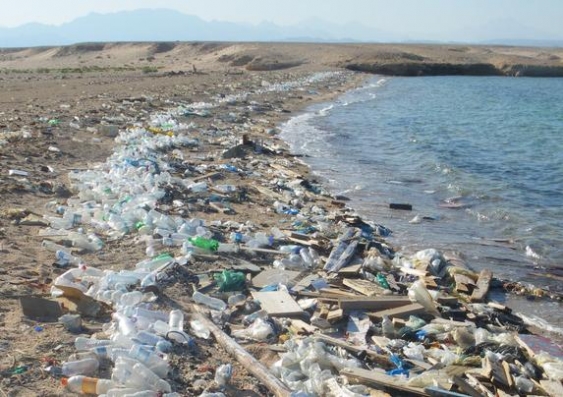Tracking down the origins of ocean garbage patches
UNSW mathematicians and oceanographers have developed a model that could reveal who is to blame for litter in the floating garbage patches in the world’s oceans.
UNSW mathematicians and oceanographers have developed a model that could reveal who is to blame for litter in the floating garbage patches in the world’s oceans.

UNSW mathematicians and oceanographers have developed a model that could reveal who is to blame for litter in the floating garbage patches in the world’s oceans.
The best known area of concern is the Great Pacific Garbage Patch between Hawaii and California where pieces of plastic outweigh plankton in that part of the ocean, posing a risk to fish, turtles and birds.
It is one of at least five garbage patches, each located in the centre of large ocean currents called gyres which suck in and trap floating debris.
Professor Gary Froyland and Robyn Stuart of the School of Mathematics, and Dr Erik Van Sebille of the Climate Change Research Centre, have created a model that can help determine where the litter came from – a difficult task for a system as complex and massive as the ocean.
The research is published in the journal Chaos.
“In some cases, you can have a country far away from a garbage patch that’s unexpectedly contributing directly to the patch,” says Professor Froyland.
For example, the ocean debris from Madagascar and Mozambique would most likely flow into the south Atlantic, even though the two countries’ coastlines border the Indian Ocean.
The new model could also help determine how quickly garbage leaks from one patch into another, says Dr van Sebille: “We can use the new model to explore, for example, how quickly trash from Australia ends up in the north Pacific.”
At the heart of the researchers’ work on the origins and fate of floating rubbish lies a bigger question – how well do the ocean’s surface waters mix?
Fast-moving ocean currents form due to winds, differences in water temperatures, salinity gradients across the globe, and the forces caused by the spinning Earth.
Currents stir ocean waters, but they also serve as barriers that minimize mixing between different ocean regions, much like the blast of fast-moving air at the entrance of an air-conditioned store keeps the cold inside air from mixing with the warm outside air.
The researchers divided the entire ocean into seven regions whose waters mix very little. Their approach borrowed mathematical methods from a field known as ergodic theory, which has been used to partition interconnected systems like the internet, computer chips and human society, and the new analysis revealed the underlying structure of the ocean without getting bogged down in complex simulations.
“Instead of using a supercomputer to move zillions of water particles around on the ocean surface, we have built a compact network model that captures the essentials of how the different parts of the ocean are connected,” says Professor Froyland.
According to the new model, parts of the Pacific and Indian oceans are actually most closely coupled to the south Atlantic, while another sliver of the Indian Ocean really belongs in the south Pacific.
“The take-home message from our work is that we have redefined the borders of the ocean basins according to how the water moves,” says Dr van Sebille.
The geography of the new basins could yield insights into ocean ecology in addition to helping track ocean debris.
Read an article on the research by Dr van Sebille and Professor Froyland on The Conversation.
Media Contact:
Deborah Smith, UNSW Science, 9385 7307, 0478 492 060, deborah.smith@unsw.edu.au